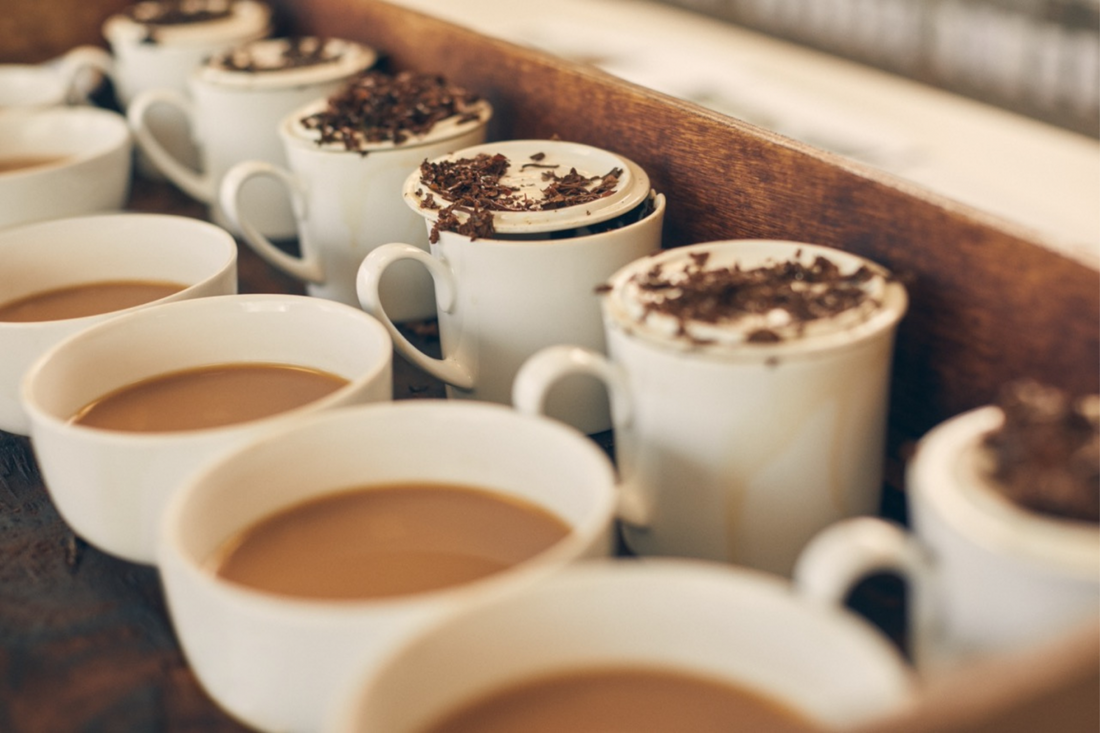We’re here to talk about tea.
Over the coming months, we’ll share our knowledge and passion with you. We’ll explore how tea is made, the road to a more sustainable future and the culture surrounding it.
We want to engage in conversion, so share your opinion with us. What would you like to know about? What questions do you have for us? Comment below!
This is the first article in our series to kick things off. Each section will be expanded upon – we’ll talk beyond Ringtons, and journey around the world to different origins, touching on their unique set of characteristics and challenges. We’ll get technical and go behind the scenes.
We look forward to sharing our world with you. For now, enjoy a summary of our teas journey from harvest to home…
Typically, supermarket tea can take up to a year to get to you once harvested. With Ringtons tea, it’s just six months from harvest to home. Let us explain how the tea you know and love, gets to you so quickly…
We buy from over 40 tea gardens in seven different countries to make over three million tea bags a year, all managed by our team of tea experts – tasters to technicians, supply chain specialists to warehouse operatives – we all come together to deliver you the freshest tasting tea with integrity.

1. Growing
Like wine, where tea is grown, how it’s grown, and the surrounding environment will affect its taste. From the rich volcanic soil of Kenya’s East Rift to the foothills of the Himalayas in Darjeeling – each origin provides a unique profile of tea that we can blend into something smooth and sweet, brisk and robust.
The tea plant Camellia Sinensis is an evergreen shrub native to Asia and has been cultivated for thousands of years, originally in China, for medicinal purposes. Now, over three thousand years later, three million tonnes of tea are grown each year for us to enjoy all day, everyday.
Growing tea from seed to a crop ready to harvest can take up to five years in warm moist climates such as East Africa – Kenya, Malawi and Rwanda, as well as Asia in Sri Lanka, India and China.

2. Harvesting
When plucked, the top two tea leaves and a bud are robust and waxy, so they’re sent for processing, often within 24 hours, to dry out and develop the teas distinct characteristics. The process differs according to the tea that’s being produced. You can read more about the tea process here.

3. Buying: Leaf lock
Once processed, tea is weighed, packed into sacks and sent off to be sold at auction – this can mean the tea is sat around for up to eight weeks, getting stale and losing flavour, which isn’t ideal.
So, instead, we buy teas fresh from harvest, avoiding the auction. This means as soon as the tea is processed and put into sacks, we can vacuum pack it as part of our Leaf Lock process. The additional barrier material stops any oxygen or external factors influencing the flavour of your tea, and we can be content in the knowledge it’s being shipped here to the UK protected.
Look out for the Leaf Lock logo on our packs of tea!

4. Shipping
The tea is shipped to the Port of Tyne, something we have done for decades. From here, the tea travels 10 miles to our production facility in Longbenton to be packed within 8 hours of blending.
Click here to watch a video of our tea arriving at Newcastle Quayside in the 1930s!

James, Graeme and Jake taste tea every day in our specially designed tasting room – north-facing windows mean the colour of tea can be examined without being influenced by direct sunlight.
5. Blending
Every crop of tea will be slightly different, affected by growing conditions. This ultimately impacts the overall characteristics of the tea – colour and taste. So, our team of tea tasters will sip over 500 teas daily, evaluating cup colour, mouthfeel, taste and overall quality – all so they can develop consistent blends for you to enjoy at home.

6. Sealing into Tea bags
Once the tea has been blended to the recipe in a giant drum, it’s weighed and sealed into PLA tea bags, foil wrapped, double sealed and flushed with nitrogen. Locking in the flavour:
Tea bag seals: We have switched from oil-based plastics to a bio-based plastic PLA. It’s made from a more sustainable source and can be disposed of via your local councils food or garden waste collection.
Foil wrap: The barrier material keeps the tea as fresh as possible. If we packaged our tea unprotected in a cardboard box, the tea just wouldn’t taste like you know and love it. Unfortunately, at the moment, it can’t be recycled, but the team are working on a solution! Watch this space.
Nitrogen flush: This pushes out all the oxygen from the pack, so literally nothing is affecting the taste. Want to know how we test this in Quality Control? We put it in a water bath and watch for bubbles!

7. To the doorstep
Finally, the tea is transported to our main warehouse in South Kirkby before being allocated to our sales offices across the country. From there, each day, our salespeople pack their vans and deliver tea and more to your door.
All in all, the process is quick, resulting in a fresher, more enjoyable cup of tea every time. By reducing touch points in the supply chain, we reduce our carbon footprint – controlling our supply chain at each stage.

